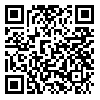Volume 2, Issue 4 (9-2015)
jbrms 2015, 2(4): 30-40 |
Back to browse issues page
Download citation:
BibTeX | RIS | EndNote | Medlars | ProCite | Reference Manager | RefWorks
Send citation to:



BibTeX | RIS | EndNote | Medlars | ProCite | Reference Manager | RefWorks
Send citation to:
Valadbeigi T, Tavakoli Z. Comparison of biosorption of cadmium ions from aqueous solutions by the lichens Acarospora strigata, Lecanora muralis and Caloplaca aurantia. jbrms 2015; 2 (4) :30-40
URL: http://jbrms.medilam.ac.ir/article-1-191-en.html
URL: http://jbrms.medilam.ac.ir/article-1-191-en.html
, tvaladbeigi@yahoo.com
Abstract: (4831 Views)
Introduction: Biosorption of heavy metals can be an effective process for the removal of heavy metal ions from aqueous solutions. Also, living lichens are known to accumulate metals across their surface.
Materials and methods: In this study, the biosorption of cadmium ions Cd (II) by the lichens Acarospora strigata, Lecanora muralis and Caloplaca aurantia was investigated in aqueous solution in a batch system with respect to pH, biomass dosage, temperature initial cadmium ion concentration and contact time.
Results: The biosorption capacity of the biomass was found to be 6.9 mg/g at pH 7 for L. muralis, 7.6 mg/g at pH 6 for A. strigata and 8.6 mg/g at pH 7 for C. aurantia. The experimental adsorption data were fitted to the Freundlich adsorption model. Experimental data were also tested in terms of kinetic characteristics and it was found that biosorption processes of Cd (II) ions followed well pseudo-second-order kinetics.
Conclusion: The results indicated that the biomass of L. muralis, A. strigata and C. aurantia are suitable biosorbents for removing Cd (II) from aqueous solutions and among these three species, C. aurantia has greater ability to remove cadmium from aqueous solutions.
Type of Study: Research |
Subject:
Biochemistry
Received: 2015/06/15 | Accepted: 2015/08/20 | Published: 2015/10/12
Received: 2015/06/15 | Accepted: 2015/08/20 | Published: 2015/10/12
Send email to the article author
| Rights and permissions | |
 |
This work is licensed under a Creative Commons Attribution-NonCommercial 4.0 International License. |




